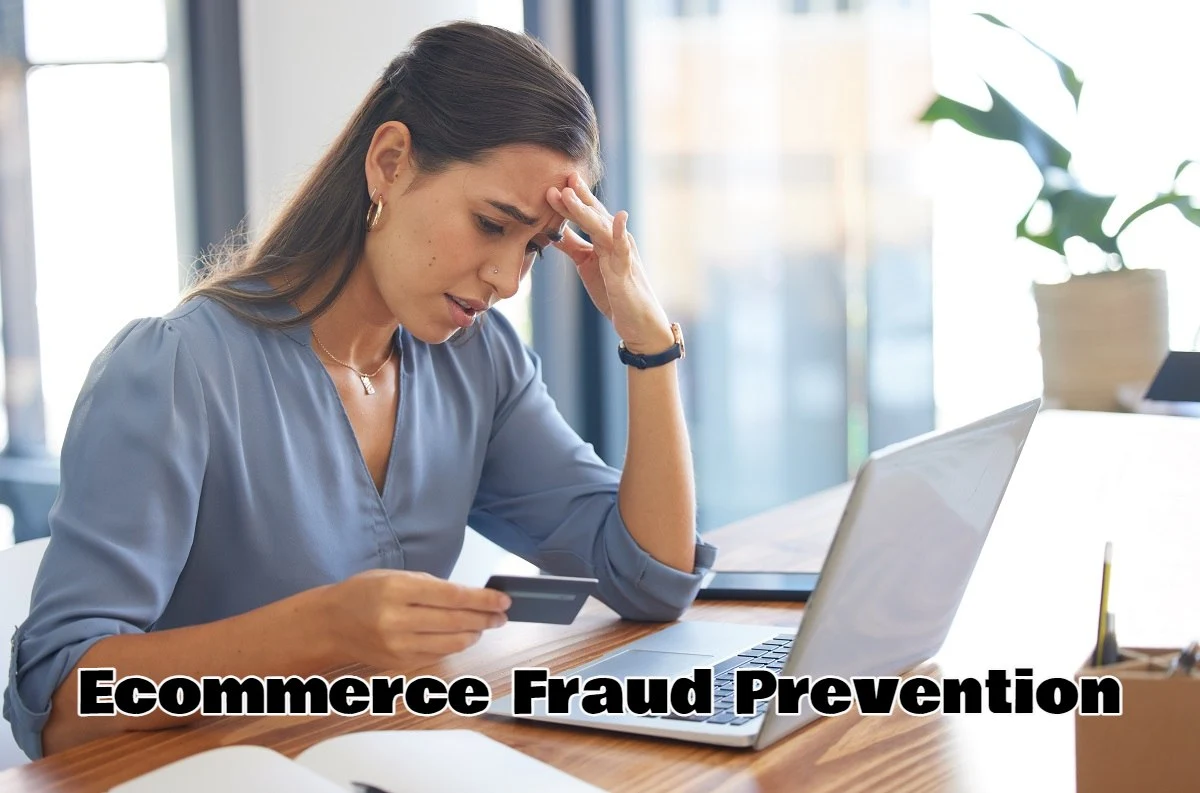Irrespective of the size of your ecommerce business, online sales are increasingly becoming vital to driving its growth and reaching new markets. However, payment fraud is also influencing the normal proceedings, making it dire for retailers to take serious measures regarding ecommerce fraud prevention not only to protect the trust of their customers but also the bottom line of their business.
What Does This Article Contain about Ecommerce Fraud Prevention and Detection?
- What is ecommerce fraud in actuality?
- What are the businesses vulnerable to ecommerce fraud?
- How many types of ecommerce fraud are there?
- What are common trends and future predictions regarding ecommerce fraud?
- How can you detect and prevent an ecommerce fraud?
So, this article will highlight the importance of understanding and handling ecommerce fraud on the part of businesses, exploring the latest trends and strategies. It will further ensure that customers enjoy a secure shopping experience on every channel.
What Do You Mean by Ecommerce Fraud? A Step to Understanding Ecommerce Fraud Prevention
All the illegal activities whatsoever occurring within the online shopping and transaction environment are referred to as e-commerce fraud. Exploiting the loopholes in the digital commerce systems on the part of fraudulent agents is one of the main criminal activities in this connection. Moreover, ecommerce fraud may also involve manipulating customers and businesses to have undue access to very crucial personal and financial information.
Ecommerce fraud results in financial loss and reputation damage just because of its unauthorized transactions. Customer trust, security, operating costs, etc. are some of the areas that affect any online operating entity. Ecommerce fraud prevention ways may help save all of these crucial areas.
The Types of Businesses in Dire Need of Ecommerce Fraud Prevention
Usually, all kinds of online businesses may get affected by ecommerce fraud; the following ones are more viable to it, anyhow. So, these businesses must remain more vigilant against this gruesome online crime. It will help them learn how to prevent ecommerce fraud.
1. Online Retailing Business Needs Ecommerce Fraud Prevention
A great volume of transactions and the collection of sensitive customer data are the two main reasons why this business is so highly at risk. This is so because such a business sells its services and products directly to its customers.
2. Payment Processing Businesses
Services like credit card processing need to ensure the security and accuracy of payment transactions between buyers and sellers. Hence, the companies handling such transactions need to be vigilant against ecommerce fraud. So, this sort of business is under a high threat of being hit by an ecommerce fraudulent trick.
Digital Content Providing Business
Digital products like streaming services, e-books, software, etc. are very likely targets of the fraudulent actors. They are always after unauthorized access to the digital content to distribute it unlawfully.
Businesses Related to Subscription-Based Services
Such types of services must remain highly alert against fraudulent sign-ups and unauthorized access to their content and services. Online courses, companies providing software-as-a-service, membership sites, etc. are some of the examples of such subscription-based services.
Businesses at Marketplaces and Dealing with Auction Sites
Fake listings, counterfeit products, fraudulent transactions, etc. are some of the areas likely to be hard hit by fraudulent intruders. This is because such online platforms deal with multiple buyers and sellers. So, these businesses need to be highly alert against such ecommerce fraud.
Travel and Event Booking Businesses
These businesses must remain watchful against false bookings of flights, hotels, events, etc. Moreover, stolen credit card information is also one of the favorite areas of fraudulent actors. Hence, all such online platforms must be highly vigilant against all such fraudulent activities.
Since more and more businesses have started accepting online payments, the chances of their being hit by ecommerce fraud have gone up accordingly. So, the above is not an absolute list of vulnerable businesses in this regard. Every online payment transaction must be made with the utmost attention.
What are the Most Common Types of Ecommerce Fraud That Need Prevention?
Regardless of the nature of your online business, you and your valued customers may have to face one of the following most common types of ecommerce fraud. Besides, fraudulent actors are always on the lookout for the ever-evolving tricks to use in fraud. That’s why both businesses and customers must be extra alert in this connection.
1. Unauthorized Transactions through Identity Theft
Sometimes, a fraudster may use your name, address, credit or debit card details, etc. through your lost or stolen credit card information. It may result in unauthorized transactions like high-scale purchases, opening an account, etc. Remember, the bluffers may steal your information from your card through hacking, phishing, or skimming.
2. Friendly or Chargeback Fraud
With a possible ill will in mind, a customer may use the chargeback process incorrectly. They buy something and then dispute the purchase, claiming not to recognize or realize it. Their inner malicious intent makes them do all this. They call their banks to refund their sum of money so that they may have the items or services free of cost. However, some cardholders may forget about a subscription purchase or, sometimes, the card may have been used by some siblings or closest relatives.
3. ATO or Account Takeover Fraud Direly Requires Ecommerce Fraud Prevention
It results when some fraudsters gain unauthorized access to a real user’s account by using stolen credentials or hacking, phishing, or skimming. The account is now totally at their mercy. They are free to make any illegal purchases or changes.
4. Refund Fraud
Here, an opportunist poses as a real customer and applies for a refund he has never purchased. He collects some stolen account information and provides fake order details to the online business company.
5. Phishing and Social Engineering
The fraudsters try their best to trick the real users into providing critical information or credentials. They do so by using deceptive emails, messages, and websites via phishing and social engineering. They use this sensitive information to commit fraud afterward.
6. Affiliate Fraud
Affiliate marketing programs are always beneficial for customers, but in affiliate fraud, fraudulent actors abuse such programs by generating fake traffic, clicks, and sales. They mean to receive unfair commissions afterward.
7. Interception Fraud
It happens when a fraudster intercepts a customer’s order and obtains the goods by taking over the customer’s account. All the details about the order and drop shipping go to the fraudster who further uses social engineering tricks and changes the shipping address.
8. E-Gift Card Fraud
Here, the fraudsters succeed in obtaining cash for free by buying some digital gift cards with the help of stolen payment information. They may use these cards later on or resell them to get cash.
9. Counterfeit or fake products
Sometimes, the fraudulent agents falsely represent the imitation or unauthorized products as authentic. These counterfeit or fake products are trickfully sold to real customers.
10. Drop-Shipping Fraud
With this fraud, a fraudster poses himself as a legitimate supplier. However, he never ships the sold product. The customer becomes angry and fights with the retailer who has to face financial loss in the end.
Ecommerce Fraud ____ Trends and Predictions to Justify Ecommerce Fraud Prevention Measures
If you want to prevent and combat ecommerce fraud, you are required to understand the latest trends and systemic conditions. It will surely be a proactive approach on your part, as these trends and conditions do influence the way how fraudsters perpetrate ecommerce fraud. These trends and systemic conditions also help you find current vulnerabilities for most businesses.
Here are some of the current trends and future predictions for you to consider and execute ecommerce fraud prevention tactics properly afterward.
1. Fraudulent Attacks are Growing More Sophisticated
The constant development of new tactics on the part of fraudulent actors has made it very difficult for businesses to detect and prevent fraudulent activities. Besides, these fraudsters are always refining their existing methods, making things more and more complicated for businesses to handle.
2. Mobile Commerce Fraud is Rising Rapidly
Observing the ever-increasing mobile shopping, fraudulent actors are rapidly shifting their focus to mobile platforms. Hence, businesses are wisely advised to adapt their ecommerce fraud prevention measures to meet this unique challenge that mobile commerce has given rise to.
3. The Use of Artificial Intelligence (AI) and Machine Learning has Increased a Lot
Fraudulent actors are increasingly using AI and machine learning tools to innovate more precise and complex attacks on businesses. So, businesses must prepare themselves accordingly to cope with this situation as well.
4. A Rapid Increase in Account Takeover Fraud
The rise in the prompt availability of data breaching and personal information on the dark web has caused account takeover fraud to keep rising. It makes it very easy for criminals to access online accounts and use them illegally to make unauthorized transactions and other unlawful activities.
5. Data Security and Privacy Regulations Need to be Much Focused
Keeping in mind the enhanced awareness of data privacy and security on the part of customers, business companies now need to invest more in strong data security measures. They also require complying with strict data regulations to prevent any connected fraud.
6. Improved Spirit of Collaboration and Information Sharing
There will be a strong collaboration between businesses, financial institutes, and law enforcement agencies to ensure ecommerce fraud prevention. Hopefully, dedicated task forces and industry-wide initiatives will be launched to combat ecommerce fraud more efficiently shortly.
7. Biometrics and Behavioral Analytics Will Play a Significant Role in Ecommerce Fraud Prevention
In the efforts to detect and prevent ecommerce fraud, fingerprint and facial recognition like biometric authentication will strongly be in play very soon the world over. Likewise, other behavioral analytics accessing the user’s interaction with devices and other platforms will also be in action soonest possible.
All the above-mentioned trends and predictions show that businesses need to be well informed of the evolving trends and emerging predictions. They must also adopt effective strategies to execute ecommerce fraud detection and prevention for themselves as well as their customers.
Detection and Prevention of Ecommerce Fraud
Ecommerce fraud detection and prevention aim at developing a combination of policies and tricks to check the rapid growth of online ecommerce payment fraud. Here are a few of the key strategies and tactics that may help businesses adopt ecommerce fraud prevention techniques.
1. Always Use Secured Payment Modes
Sensitive data is mostly stolen during payment transactions. So, businesses must rely on secured payment gateways that offer effective ecommerce fraud detection and prevention practices.
2. Try Your Best to Apply Strongest Authentication
Customers must use multifactor authentication, strong and unique passwords, other ecommerce fraud prevention tools, etc. to improve their account security. Businesses must send their customers a one-time password through email, SMS, some reliable authentication app, etc.
3. Companies Must Monitor Transactions and User behavior
These two will help businesses detect suspicious activities like unusual transaction patterns from the same IP address, an unusually high-level order, rapid account creation, multiple failed login attempts, etc.
4. Businesses must introduce fraud detection rules and filters
It is very much necessary on the part of businesses to flag and block suspicious transactions. There must be introduced rules and filters for this purpose. Strong implementation of these rules and filters will go a long way toward controlling transactions from high-risk locations, orders with different billing and shipping addresses, transactions beyond certain basic limits, etc.
5. Address and Card Verification Systems Must Be Developed to ensure ecommerce fraud prevention solution
Implementation of address verification service (AVS) and card verification value (CVV) will surely verify the authentication and validity of the card being used. These systems will tally the information given by the user with that present on the file with the card issuer.
6. Businesses Must Keep Their Software and Systems Updated for proper ecommerce fraud protection
A business is sure to stay ahead of the upcoming threats if it regularly updates its ecommerce platform, plugins, and security software. All this will keep it away from known vulnerabilities.
7. Better Train Employees and Enhance General Awareness to Ensure Ecommerce Fraud Prevention
Every business must manage to educate its team about common fraud tactics. Moreover, the importance of data security and the crucial steps regarding the detection and prevention of ecommerce fraud must also be addressed properly. It will be highly appreciable if they introduce an ecommerce fraud prevention software to guide the concerned.
8. Securing Ecommerce Fraud Prevention: Customer Data Must Be Encrypted and Protected
Your database stores sensitive customer information, which you must protect by using encryption and other security measures. Furthermore, only authorized individuals should be able to access the stored data.
9. Businesses Must Monitor Chargeback
It will be highly beneficial if a business tracks the chargeback rates and carefully analyzes the reasons behind them. It will help identify potential fraud patterns or weaker areas of that business.
10. Every Business Must Communicate with Its Competitors and Industry Management
Every business can learn about ecommerce fraud vulnerabilities from its competitors in the industry. So, try your best to share information about fraud trends and ecommerce fraud prevention best practices with other businesses in the industry. You can do so by creating open channels of communication and taking part in antifraud initiatives and organizations. In this way, your business can stay informed about uprising threats and prevention strategies.
Conclusion about Ecommerce Fraud Prevention
Taking ecommerce fraud prevention measures is sure to reduce the dangerous threats to your business. You must consult some ecommerce fraud prevention companies immediately and try your best to stay informed about the ever-evolving fraud tactics and the best practices to tackle them by keeping in touch with the market.




